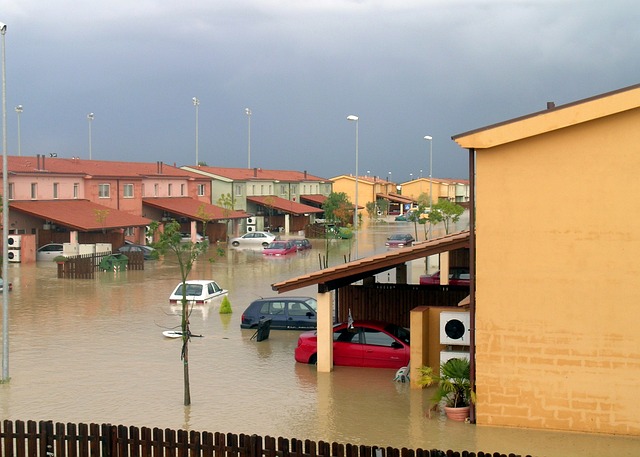Did you know that floods are the most common natural disaster in the United States? Experiencing a house flood can be both scary and overwhelming, but it’s crucial to remain calm and take appropriate actions. In this article, we’ll guide you through the essential steps to take after a house flood, from ensuring your family’s safety to repairing and rebuilding your home.
Ensuring Safety
When a house flood occurs, the first and most important thing to do is ensure the safety of everyone in the home. Do not panic, as remaining calm will help you make better decisions. Leave the flooded area immediately, and help others, especially children and pets, to do the same.
After evacuating, it’s crucial to turn off the electricity and gas supply to your home. This will prevent potential fires, explosions, or electrocution. Make sure not to touch any electrical switches or appliances while you’re wet or standing in water.
Avoid contact with the floodwater, as it may contain harmful bacteria or chemicals. Keep a safe distance from the water and do not let children or pets play near it. If you must enter the water, wear protective gear like rubber boots and gloves to reduce the risk of injury or infection.
Contacting Authorities and Insurance
Once you have ensured the safety of everyone in your home, it’s time to contact your insurance company. It’s essential to inform them about the flood as soon as possible, as some policies have strict deadlines for reporting incidents. To learn more about flood insurance, ask your agent or look online for helpful resources.
Before you begin cleaning up or making repairs, document the damage caused by the flood. Take photos and videos of the affected areas and damaged items, as these will be valuable when filing an insurance claim. Make a list of all damaged items, noting their approximate value and any available receipts.
Depending on the severity of the flood and the cause, you may also need to notify local authorities. They can provide guidance on whether it’s safe to return to your home and if additional assistance is available.
Understanding your insurance coverage and the claims process is essential to recovering from a home flooding. Be prepared to provide all necessary documentation, including proof of ownership and a detailed inventory of damaged items. Keep in touch with your insurance agent to stay informed about the progress of your claim and any required steps.
In some cases, your insurance company may send an adjuster to assess the damage in person. If this happens, be sure to show them all affected areas and explain any concerns or questions you have. The adjuster’s report will help determine the amount of compensation you receive for the damage.
By following these steps, you can ensure that you are taking the necessary precautions to keep everyone safe and protect your interests after a house flood. Remember, it’s crucial to act quickly and stay organized to make the recovery process as smooth as possible.
Initial Cleanup and Assessment
After ensuring safety and contacting the appropriate parties, it’s time to start the cleanup process. The first step is to remove standing water from your home. You can use equipment like pumps or wet vacuums to help with this task. If you don’t have these tools, you can rent them from a local store or hire a professional service to assist you.
Once the water is removed, take a close look at the damage to your belongings and property. It’s essential to determine which items can be salvaged and which need to be thrown away. Remember, some items might look fine, but if they’ve been soaked in contaminated water, they may not be safe to keep.
After sorting your items, begin drying out the affected areas. Use fans and dehumidifiers to speed up the process and prevent mold growth.
Open windows and doors to improve ventilation and help the air circulate. This step may take several days, but it’s crucial for your home’s long-term health.
Preventing Mold and Mildew Growth
Mold and mildew can start growing within 24 to 48 hours after a flood. Preventing their growth is essential for maintaining a healthy home environment.
To do this, you must first identify areas prone to mold growth. These include damp, dark spaces like basements, crawlspaces, and areas with water damage.
Next, clean and disinfect surfaces that have come into contact with floodwater. You can use a solution of bleach and water to kill mold spores and prevent them from spreading. Be sure to wear gloves and a mask while cleaning to protect yourself from inhaling mold spores or coming into contact with contaminated water.
Monitoring humidity levels in your home is another important aspect of mold prevention. Keep the humidity below 60% to create an environment that’s less favorable for mold growth. You can use a hygrometer, which is a device that measures humidity, to help you track levels in your home.
Sometimes, despite your best efforts, mold can still develop. If you discover mold or suspect you have a hidden mold problem, don’t hesitate to seek professional help. Mold remediation experts have the necessary tools and knowledge to safely remove mold and prevent it from returning.
Regular home maintenance is essential for preventing future flooding and mold issues. Keep your gutters and downspouts clean, and ensure that your property is properly graded to direct water away from your foundation. Additionally, inspect your home regularly for signs of water damage, mold, or mildew.
By taking the time to clean up and assess the damage after a flood, you can prevent long-term problems and protect your home and family. Remember to stay vigilant against mold and mildew growth and keep up with home maintenance tasks to reduce the risk of future flooding.
Repairing and Rebuilding
After cleaning and drying your home, you’ll need to focus on repairing the damage caused by the flood. First, determine the extent of the damage.
Check walls, floors, and other structural components for signs of water damage or weakening. It’s essential to address these issues before moving forward with other repairs.
Consult with professionals to help you assess the damage and plan for repairs. They can provide guidance on the best course of action, whether it’s repairing your existing structure or rebuilding parts of your home. Remember that some repairs may require permits or inspections, so be sure to follow local regulations when repairing a house.
As you plan for repairs, consider using water-resistant materials in areas that are prone to flooding. This can help reduce the risk of future damage and make your home more resilient. Talk to your contractor about the best options for your specific situation.
Develop a timeline and budget for your repairs, and keep track of your progress. It’s crucial to stay organized and communicate with your contractor to ensure the project stays on track. Make sure to factor in any financial assistance you receive from your insurance claim or other sources.
Preparing for Future Floods
While you can’t always prevent a flood from occurring, you can take steps to minimize the damage and protect your home. Start by assessing your home’s flood risk.
Research the causes of a flood in your area, and learn about the history of flooding in your neighborhood. This information can help you better understand the potential threats and plan accordingly.
Next, invest in flood prevention measures. Installing sump pumps, backwater valves, or other devices can help protect your home from water damage.
These systems work by redirecting water away from your foundation, preventing it from entering your home. Talk to a professional about the best flood prevention options for your specific situation.
Creating an emergency plan and kit is another crucial step in preparing for future floods. Develop a plan that outlines the steps you’ll take in the event of a flood, including how you’ll evacuate your home and where you’ll go for safety. Ensure that every member of your household knows the plan and is prepared to follow it.
Your emergency kit should include essential items like:
- Non-perishable food
- Water
- Flashlights
- Batteries
- First aid supplies
- Important documents
Keep the kit in an easily accessible location, and make sure everyone in your home knows where to find it.
By taking these precautions, you can reduce the impact of a flood on your home and family. Regular maintenance, flood prevention measures, and emergency planning can help you stay prepared and protect your property from future flooding events. Remember, it’s always better to be proactive when it comes to protecting your home and loved ones.
Moving Forward After a House Flood
Recovering from a house flood can be a daunting task, but with the right approach and guidance, you can overcome this challenge. By following the steps outlined in this article, you’ll be better prepared to handle the aftermath of a flood and protect your home and family from future disasters. For more helpful tips and information, be sure to explore our blog.









